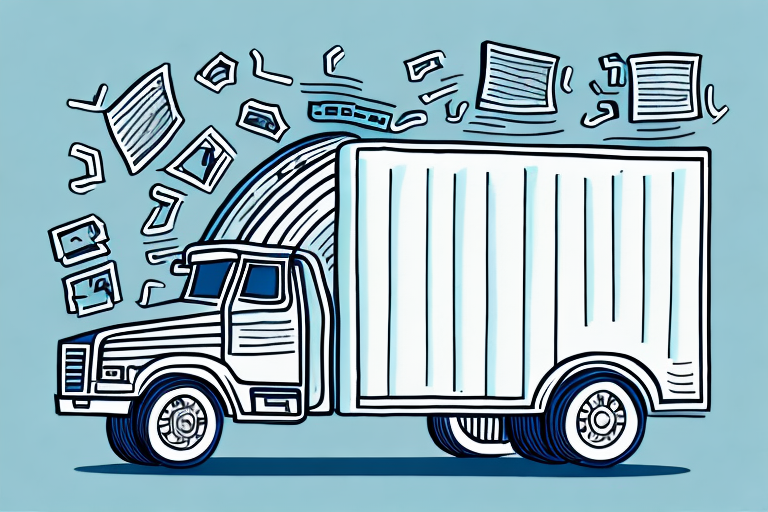Understanding Economy Ground Shipping
Economy ground shipping is a cost-effective method for transporting goods over long distances using road or rail networks. Unlike air or expedited shipping, economy ground shipping is slower but significantly more affordable, making it an ideal choice for businesses aiming to reduce shipping costs without excessively prolonging delivery times.
One of the key advantages of economy ground shipping is its environmental impact. Ground transportation generally emits less carbon dioxide per mile compared to air transportation, offering a more sustainable option for eco-conscious businesses.
Additionally, economy ground shipping is well-suited for larger and heavier items. Unlike air shipping, which often imposes strict weight and size restrictions, ground shipping accommodates bulkier shipments at a lower cost, providing greater flexibility for businesses with diverse product ranges.
Calculating and Understanding Shipping Time
How to Calculate Economy Ground Shipping Time
Estimating the delivery timeframe for economy ground shipping involves considering the distance between the origin and destination, as well as the carrier's logistics network. Typically, shipping times range from 1 to 8 business days. Businesses can utilize online shipping calculators, consult carrier service guides, or directly discuss with carrier representatives to obtain accurate transit estimates.
However, it's essential to account for variables such as weather conditions and unexpected events like road closures or accidents, which can impact delivery times. Incorporating a buffer period into shipping estimates can help mitigate the effects of these unforeseen delays.
Transit Time vs. Delivery Time
Understanding the distinction between transit time and delivery time is crucial for accurate shipping estimations. Transit time refers to the duration a package spends in transit between the origin and destination, while delivery time encompasses the period from arrival in the destination area to the final delivery point. Both metrics are vital for setting realistic expectations and ensuring customer satisfaction.
Additionally, reviewing a carrier's service level agreement (SLA) can provide insights into their commitment to delivery timeframes, helping businesses make informed decisions when selecting a carrier.
Factors Influencing Economy Ground Shipping Time
- Distance: Longer distances naturally extend shipping times. The further a package must travel, the more time it will take to arrive at its destination.
- Carrier: Each carrier has its own logistics network and operational efficiency, affecting overall shipping speed.
- Volume: High order volumes can lead to delays as carriers adjust their routes and resources to handle increased shipments.
- Seasonality: Peak seasons, such as holidays, can result in longer shipping times due to increased demand.
- Type of Product: Fragile or perishable items may require special handling and packaging, potentially increasing transit time.
- Shipping Destination: Remote or rural areas often experience longer delivery times compared to urban centers with robust transportation infrastructures.
Choosing the Right Carrier for Your Economy Ground Shipping Needs
Selecting an appropriate carrier involves evaluating several factors to ensure reliable and cost-effective shipping:
- Shipping Time: Assess the carrier's average transit times to ensure they align with your delivery expectations.
- Cost: Compare shipping rates to find a balance between affordability and service quality.
- Reliability: Research carrier reputations and read reviews to gauge their dependability.
- Customer Service: Effective communication and support are essential for resolving any shipping issues promptly.
- Tracking Capabilities: Choose carriers that offer robust tracking systems, providing real-time updates for both businesses and customers.
- Additional Services: Consider carriers that offer value-added services such as insurance, packaging materials, or pick-up options to enhance the shipping experience.
Managing Expectations and Improving Shipping Performance
Managing Customer Expectations
Transparent communication about shipping times is vital for maintaining customer trust. Clearly stating estimated delivery periods and proactively informing customers of any potential delays can enhance satisfaction and reduce uncertainty.
Providing tracking information allows customers to monitor their shipments, fostering a sense of reliability and control over the delivery process.
Proper Packaging
Ensuring that goods are securely packaged minimizes the risk of damage during transit, which can lead to delays and additional costs. Utilizing sturdy boxes, appropriate cushioning materials, and secure sealing methods helps maintain product integrity and expedites the delivery process.
Overcoming Common Challenges
- High Order Volumes: Streamline order processing and partner with carriers that can efficiently handle increased shipping demands.
- Long Shipping Distances: Positioning warehouses or distribution centers closer to major customer bases can reduce transit times.
- Weather Disruptions: Develop contingency plans to reroute shipments or adjust schedules in response to severe weather conditions.
Pros and Cons of Economy Ground Shipping
Economy ground shipping presents a mix of advantages and disadvantages that businesses should consider:
Benefits
- Cost-Effective: Generally more affordable than air or expedited shipping options, enabling businesses to reduce shipping expenses.
- Environmental Sustainability: Lower carbon emissions per mile compared to air transportation, supporting eco-friendly business practices.
- Capacity for Larger Shipments: Accommodates bulkier and heavier items without the constraints typically associated with air shipping.
Drawbacks
- Longer Delivery Times: Not ideal for urgent shipments requiring rapid delivery.
- Potential for More Handling: Increased handling during ground transportation may elevate the risk of damage to fragile or perishable items.
- Less Predictable Delivery: Subject to delays from factors like traffic, weather, and logistical challenges.
Despite these drawbacks, economy ground shipping remains a viable option for businesses prioritizing cost savings and sustainability. By balancing these factors with their specific shipping needs, companies can effectively integrate economy ground shipping into their logistics strategies.
The Importance of Tracking in Economy Ground Shipping
Effective tracking is a cornerstone of successful economy ground shipping. Providing real-time tracking information not only reassures customers but also allows businesses to monitor shipments and quickly address any issues that may arise during transit.
Utilizing advanced tracking software can offer deeper insights into delivery patterns, enabling businesses to optimize shipping routes, reduce costs, and enhance overall efficiency. By analyzing delivery data, companies can identify bottlenecks and implement strategies to streamline their shipping processes, leading to improved customer satisfaction and operational performance.
Conclusion
Economy ground shipping stands out as a cost-effective and environmentally friendly option for businesses seeking reliable delivery solutions. By thoroughly understanding shipping times, selecting the right carriers, and effectively managing customer expectations, companies can leverage economy ground shipping to meet their logistical needs without compromising on quality or sustainability.
Regularly reviewing and optimizing shipping strategies ensures that businesses remain adaptable to industry changes and evolving customer demands. Embracing best practices in economy ground shipping can lead to enhanced operational efficiency, reduced costs, and increased customer loyalty.




















